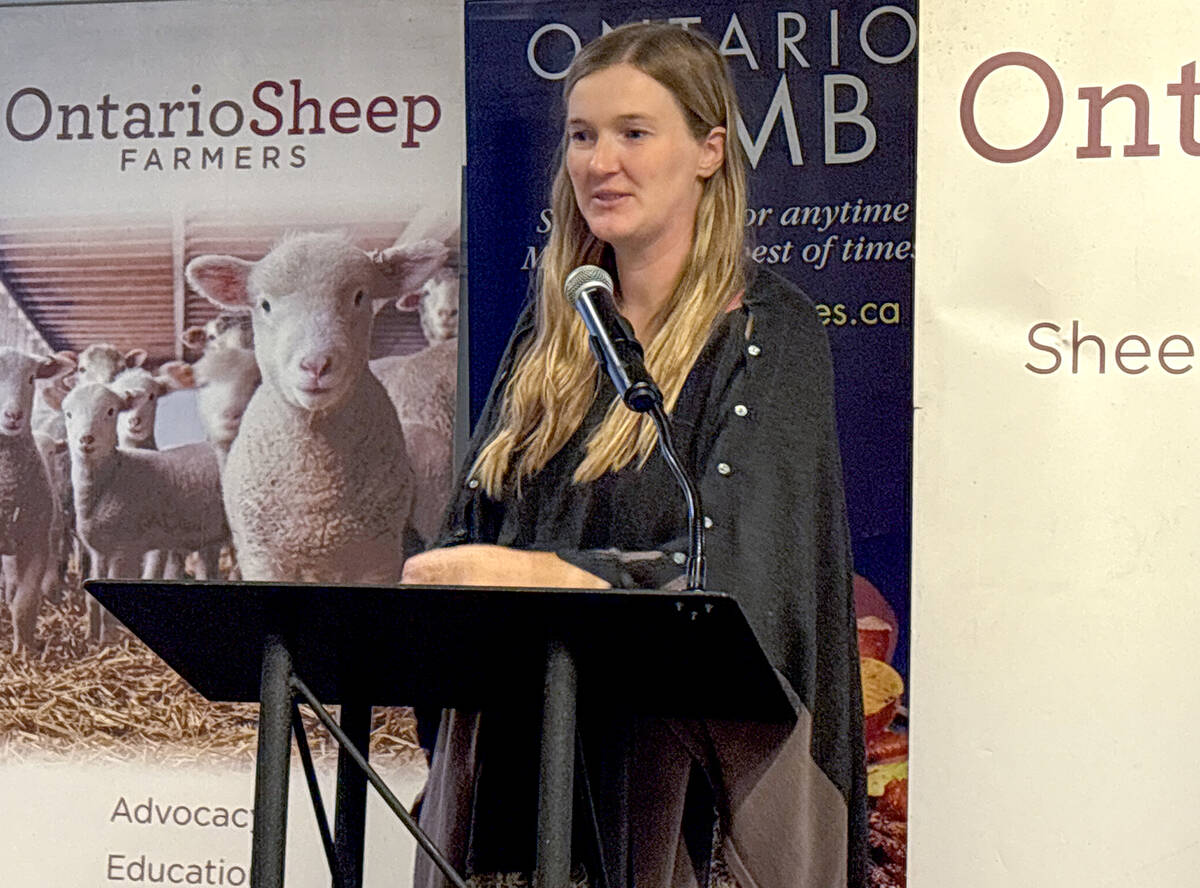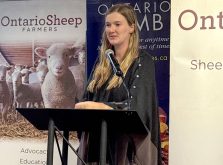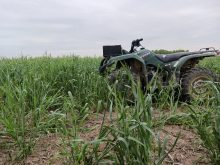Grazing livestock on rented land or on cover crops presents challenges but a number of Ontario producers are proving it’s worth a try to combine the two strategies.
One of them, beef farmer Tom Aikins of Ravenna, was recently named the 2023 recipient of the Beef Farmers of Ontario Mapleseed Pasture Award.
Why it matters: Feed costs continue to strain livestock-based profit margins and as concerns about soil health increase, interest in cover crops has grown.
Read Also

Footflats Farm recognized with Ontario Sheep Farmers’ DLF Pasture Award
Gayla Bonham-Carter and Scott Bade, of Footflats Farm, win the Ontario Sheep Farmers’ 2025 DLF Ontario Pasture Award for their pasture management and strategies to maximize production per acre.
Aikins got his start in agriculture as an 18-year-old high school co-op student, first on a dairy farm and then on a beef farm. A year later, still working for the beef producer, he rented his first farm, a nearby piece with only a serviceable page wire fence along the front and a neglected pasture.
He fenced a five-acre paddock and let the cows in, fenced another 11 acres so it would be ready for the cattle to move into, and fenced another smaller section for further grazing.
Now, a few years later, he continues to pasture about 45 cattle, custom-feeds calves, and grows about 200 acres of hay and 60 acres of other cash crops, all on rented land.
This year he plans to plant some cover crops after wheat and graze them next spring, and grow a few acres of corn for grain and winter-graze the cattle on the stover.
During a webinar earlier this year, hosted by the Ontario Forage Council, Aikins said part of the reason for getting into cash crops is “just to rotate some of our rougher fields and get them back into higher production.”
Referring to these areas as “golf courses” because they’re full of groundhog holes and have little plant growth, he said some fields have been rejuvenated to the point that growth is “waist-high and so thick you can barely run through it” when he’s ready to turn in the cattle.
A key to kickstarting this rejuvenation is bale grazing either in winter or when weather conditions prevent him from pasturing his cattle on a regular field.

He places round bales of hay in the field and lets the cattle spread the seed as they eat and defecate. He’s careful to place new bales in a different location each time to facilitate spreading.
With 10 acres and about 40 cows, he said producers can bale-feed and move the feeders throughout the winter, spreading nutrients and seed.
In Dufferin County, cattle and sheep producer Mike Swidersky also keeps costs in mind as he plans late-season grazing for his 500 ewes and associated lambs.
In a typical year, Swidersky is on the lookout for a well-established cover crop of red clover on a neighbour’s farm to serve as September’s fodder, followed in October by an oats-based cover crop to carry the flock through to winter.
If the move amounts to more than five kilometres, he’ll consider trucking the sheep — along with a pair of guard dogs — to their temporary home. But if it’s closer and along lesser-travelled roads, the sheep go on foot.
“Generally, I’ll wean the lambs before I go,” Swidersky told Farmtario. “But I have taken them along too.
“I can grow some pretty good perennial pastures that I’m quite happy with but these annuals and biannuals, during the fall, are so much better-quality feed than what you get from the perennials at that time of year. … With increasing feed costs, (grazing cover crops) has kind of become a mandatory practice for me.”
Without a good grasp on fencing and water sources, the Swidersky and Aikins methods aren’t suited for everyone.
With sheep, Swidersky says electrified mesh netting is the way to go. If there’s abundant pasture within the paddock, there’s not much reason for the flock to stray. The mesh provides good peace of mind, as much for the sheep as for keeping the guard dogs from wandering.
“You don’t want them getting out onto a busy road,” he said. “I’ve even had (the sheep pasturing in a field) along Highway 89.”
The posts come attached to the netting so it’s a straightforward task to unroll and roll up a new fence. He uses the same product for exterior and cross-fencing to allow the sheep gradual access in a rotational system.
Swidersky says the rotational approach helps manage feed costs. It is a more efficient way for livestock to utilize the pasture and also makes it easier to keep an inventory of feed before moving the flock.
“Plus, it’s great for the farm owner if they’re trying to get fall field work done,” Swidersky said. “If they’re in an 80-acre field and they’re more than halfway through it, (the host farmer) can maybe go in there and work the land so he doesn’t have to wait until later in the fall.”
He estimated it takes an average of 30 minutes per day to manage grazing when the sheep are on their fall-season cover crop pastures.
Perhaps the biggest keys to Swidersky’s success are his ATV, which logs approximately 5,000 kilometres per year, and a portable solar power system he uses to electrify the fence and sometimes pump water.
The solar panels originally powered a water pumping system at home and were repurposed for the fence.
For his cattle, Aikins originally installed fencing around the farms he rented using a single-strand 14-gauge wire. He has since upgraded some locations to two strands of high-tensile wire. It’s more expensive but it can be stretched tighter without sagging.
One good thing about several of his rented fields, and the general area where he farms, is that there are already visual barriers for the cattle, mainly in the form of stones piled along the fencerows and property lines.
In addition, the cattle he originally purchased were trained for electric fences, so a single strand has been effective. The calves regularly get underneath the single strand but don’t stray far from their mothers.
Don’t cheap out
Aikins’ research into insurance implications suggests two strands of high-tensile are a better option. If cattle get out and cause damage on a neighbouring property, insurance might become an issue, he notes.
For interior fences, poly wire on reels is effective. Installation depends on the field shape and size. In some cases, he needs an access alley to the water source.

He follows a rotational system for the same reason as Swidersky — it’s a more efficient way for the cattle to use the feed.
Given variable terrain in some fields, Aikins prefers posts that adjust for heights where the insulators are attached. For poly wire, get the more expensive stuff, he advises.
“Don’t cheap out because the cheaper stuff won’t carry the same charge. The energizer is another thing you don’t want to cheap out on.”
He says the Gallagher company’s “Fault Finder” is also a great carry-along tool for determining why an electric fence isn’t performing up to par.















